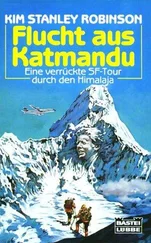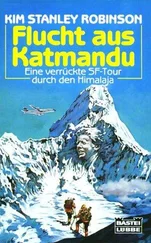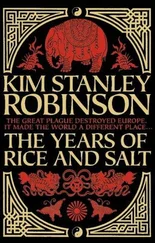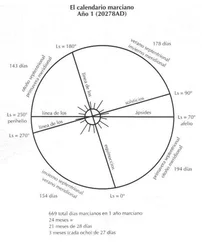What they had found this last summer was that all Antarctic temperatures, in air, water, and ice, had risen, and this was allowing melt water on the surface of the WAIS to run down holes and cracks, where it froze and split the ice around it further. When this “water wedging” reached all the way through the ice it poured down and pooled underneath, thus floating the broken ice a bit and lubricating its slide into the sea.
Why the ice streams moved so much faster than the surrounding ice was still not fully understood, but some were now postulating under-ice watersheds, where melt water was flowing downstream, carrying the ice over it along. This would explain why the ice streams were now acting more like rivers than glaciers. There were different hydrodynamics resulting in different speeds.
Diane interrupted the two glaciologists making the report before they got too deep into the mysteries of their calling. “So what kind of sea-level rise are we looking at?” she asked. “How much, and when?”
The glaciologists and the NOAA people looked around at each other, then made a kind of collective shrug. Frank grinned to see it.
“It’s difficult to say,” one finally ventured. “It depends so much on stuff we don’t know.”
“Give me parameters then, and your best bets.”
“Well, I don’t know, I’m definitely getting out of my comfort zone here, but I’d say as much as half of the ice sheet could detach in the next several years. That would be down the middle on the Ross Sea side, where there’s a big trough under Ice Stream B. All that could flood and the ice get tugged away. Here, and here,” red-lighting the map like a kid waving a penlight, “are under-ice ranges connecting the Peninsular Range and the Transantarctics, and those create catchment basins which will probably anchor a good bit of these regions,” making big red circles. Having made his ignorance disclaimer, he was now carving the map like a geography teacher. Diane ignored this discrepancy, as did everyone else; it was understood that they were now guessing, and that his red circles were not data, but rather him thinking aloud.
“So—that implies what, a couple-few meters of sea-level rise?”
“A couple.”
“So, okay. That’s pretty bad. Time scales, again?”
“Hard to say? Maybe—if these rates hold—thirty years? Fifty?”
“Okay. Well…” Diane looked around the room. “Any thoughts?”
“We can’t afford a sea-level rise that high.”
“Better get used to it! It’s not like we can stop it.”
They turned with renewed interest to Frank’s suggestion of flooding the world’s desertified lake basins. The discussion went over the parts of an informal NSF study which suggested that big salt lakes would indeed cause clouds and precipitation downwind, so that watersheds to the east would receive more water. Local weather patterns would change with the general rise in humidity, but as they were changing anyway, the changes might be hard to distinguish from the background. Ultimate effects impossible to predict. Frank noted how many studies were coming to that conclusion. Like all of them, when it came to weather. It was like nerve damage.
They looked at each other. Maybe, someone suggested, if that’s what it takes to save the seacoasts from flooding, the global community would compensate the new lakes’ host nations for whatever environmental damage was assessed. Possibly a sea water market could be established along with the carbon market; possibly they could be linked. Surely the most prosperous quarter of humanity could find ways to compensate the people, often poor, who would be negatively impacted by the creation of these reservoirs.
Frank said, “We’ve tried some back-of-the-envelope numbers, estimating the capital worth of the major port cities and other coastal development, and got figures like five hundred trillion dollars.”
General Wracke, an active member of Diane’s advisory group, put his hands together reverently. “A half a quadrillion dollars,” he said, grinning. “That’s a lot of construction funding.”
“Yes. On the other hand, for comparison purposes, the infrastructural value of property in the superdry basins of Africa, Asia, and the American basin and range comes to well under ten billion, unless you throw in Salt Lake City, which actually has a legal limit on the books as to how high the Great Salt Lake is allowed to rise, that isn’t much higher than it is now. Anyway, in global terms, statistically, there’s nothing out there in those basins. Statistically insignificant populations to displace, possibility of building new settlements by new water. Local weather deranged, but it is already. So…”
The general nodded and asked about pumping water back up onto the Eastern Antarctic Ice Sheet, which was very high and stable. Some of the NSF report was devoted to this question. The pumped sea water would freeze and then sit unconformably as a kind of salty ice cap on the fresh ice cap. Every cubic kilometer of sea water placed up there would reduce sea level by that same amount, without the radical changes implied by creating new salt seas all across the thirties north and south. Could only pump half of the year using solar power.
The energy requirements needed to enact the lift and transfer remained a stumbling block; they would have to build many powerful clean energy systems. But they had to do that anyway, as several of them pointed out. The easy oil would soon be gone, and burning the oil and coal that was left would cook the world. So if some combination of sunlight, wind, wave, tide, currents, nuclear, and geothermal power could be harnessed, this would not only replace the burning of fossil fuels, which was imperative anyway, but possibly save sea level as well.
Some there advocated nuclear for the power they needed, others called for fusion. But others held fast for the clean renewables. The advocates of tidal power asserted that new technologies were already available and ready to be ramped up, technologies almost as simple as Archimedes’ screw in concept, relying on turbines and pumps made of glassy metals that would be impervious to sea water corrosion. Anchor these units in place and the ocean would flow through them and power would be generated. It was only a matter of making the necessary investment and they would be there.
“But where’s the money going to come from?” someone asked.
“The military budgets of the world equal about a trillion dollars a year,” Frank noted, “half of that coming from the United States. Maybe we can’t afford to throw that work away anymore. Maybe the money could be reallocated. And we do need a really big manufacturing capacity here. What if the entire military-industrial complex, funded by these enormous budgets, were redirected to the projects we are outlining? How long would it take for the global effects to be measurable?”
Dream on, someone muttered.
Others thought it over, or punched numbers into their handhelds, testing out possibilities. Of course redirecting the military budgets of the world was “unrealistic.” But it was worth bringing it up, Frank judged, to suggest the size of the world’s industrial capacity. What could be done if humanity were not trapped in its own institutions? “To wrest Freedom from the grasp of Necessity,” Frank said. “Who said that?”
People in the meeting were beginning to look at him strangely again. Dream on, oh desperate fool, their looks said. But it wasn’t just him who was desperate.
“You’re beginning to sound like the Khembalis,” Anna said. But she liked that, she was pleased by that. And if Anna approved, Frank felt he must in some sense be on the right track.
———
By the time they were done with that meeting it was late, the wind barreling through the empty streets of the federal district.
Читать дальше
Конец ознакомительного отрывка
Купить книгу












